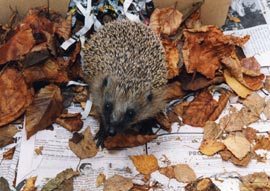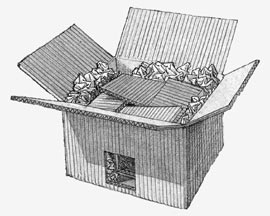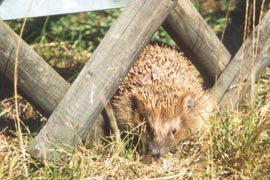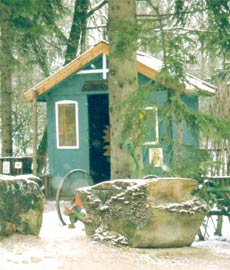In principle, the aim is to release in the autumn hedgehogs which have been restored to health and young hedgehogs which have been reared in care.

A young hedgehog should weigh from 600-700g to hibernate in care. An adult animal, depending on its age and size, should weigh between 1000g and 1400g before hibernation.
The hedgehog should be kept in a warm room while he is being nursed back to health and is gaining weight. He should be kept at a colder temperature during hibernation so that he can go into deep hibernation. The ambient temperature should be as near to the outside temperature as possible. At room temperatures of more than 6 degrees hedgehogs fall into a debilitating “shallow torpor”, when they can neither eat nor hibernate. So you should avoid putting him anywhere in direct sunlight (south facing).
Put the hedgehog enclosure in a very cold room, on a balcony, on the terrace, in a garden chalet, or build an outdoor enclosure in the garden. Cellars are usually not suitable because they are too warm.

When you have put the hedgehog in his winter quarters, continue to give him food until he does not touch it any more. It can sometimes take days or weeks until he hibernates and you must go on cleaning out the run and nest box as before.
If a hedgehog absolutely will not hibernate, take away all food for 3 days but leave fresh water for him. As lack of food is one of the catalysts for hibernation, almost all healthy hedgehogs will then go into hibernation. Without fail, you must always leave an “emergency ration” of dry hedgehog or cat food and fresh water in the enclosure
When the hedgehog has apparently gone into hibernation, stick a piece of toilet paper with 2 pieces of sticky tape over the entrance hole. Then you will be able to tell at a glance, without touching the nest box, whether the animal has woken up and has left his nest box at night or whether he is still asleep.
If you are worried because you haven’t seen the hedgehog for a long time, you can look into the nest box carefully. A hibernating hedgehog is so tightly rolled up that you can only see his spines. If you touch him, they will bristle up in slow motion. If the hedgehog is dead you will usually see its head and feet.





